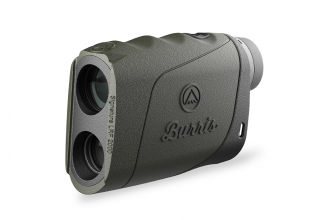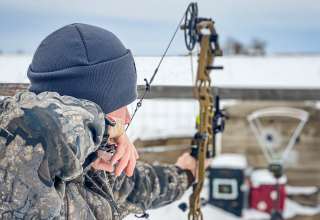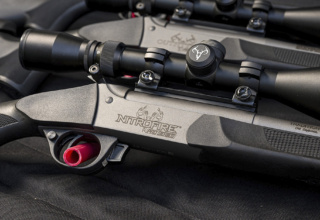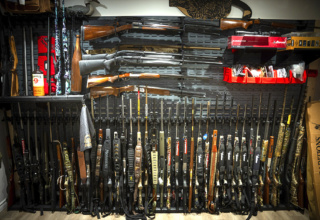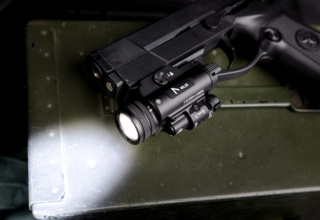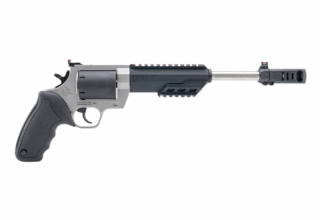I spotted the bull elk grazing contently on a natural opening in the forest. My heart raced as I checked the wind and tried to cut the distance to the hardened antlers waving in the sun. The bull was focused on his stomach and fed with a ferocious appetite, only looking up occasionally to make sure nothing was right on top of him.
Sneaking to within 100 yards, I found cover behind a young spruce tree, with long, full bows acting like a petticoat and skirt on a Victorian royal. It was the perfect hide to watch the bull’s reaction as I called. The shrill sound of a cow chirp grabbed the bull’s attention immediately. He snapped his head and, with blades of grass and clover flowers hanging from the corners of his mouth, he scanned in my direction with eyes and ears rotating to cover every square inch.
Several chirps and mews sent the bull into full courtship mode. With the rut just getting started, the young bull thought he had just won the lottery and found some lonely damsels looking for a suitor. The bull ran towards me, often running sideways, then kicking up his back legs, like a saddle bronc trying to throw his rider. The bull covered the ground in a matter of seconds and before I knew it, was standing 30 yards in front of me.
When I released my arrow, I watched it fly directly to the bull and disappear into the tan hide, just behind the shoulder. The bull flinched, as though a wasp had stung him, then turned and scratched the area with the tip of his antler. The arrow had gone through him so fast, he didn’t know he had been shot.
The bull eventually turned and started to walk away, but only made it 20 yards before falling over in plain sight. I was ecstatic! And, in disbelief at how the bull didn’t feel the arrow as it impacted, or as it passed right through his body.
I recovered the fixed-blade broadhead to find it was still in perfect condition, and I’ve been a strong believer in fixed-blade heads ever since. To understand its effectiveness, I looked up dynamic energy. It was an instant flashback to physics class, starting with theories from Pluto, right up to Einstein. In short, dynamic energy is the energy expended for specific goals. How much energy does it take to drive a broadhead through an elk?
 Most archers are familiar with “dynamic spine,” which measures the forgiveness of the arrow and how rapidly it returns to a normal state after being shot, but how does dynamic energy come into play with broadheads?
Most archers are familiar with “dynamic spine,” which measures the forgiveness of the arrow and how rapidly it returns to a normal state after being shot, but how does dynamic energy come into play with broadheads?
Kinetic energy is a measurement of the total energy an arrow and broadhead develop at a given moment in time while being delivered by a specific bow.
The dynamic energy of a broadhead is influenced by the kinetic energy of your broadhead and arrow choices. When you strip down the broadhead and look at just it, the number of blades, the length of blades, the type of tip, and the sharpness, all come into play. The bigger the head and blades the more energy is required to drive it through hair, skin, bone, organs, and tissue. It sounds grotesque, but each layer steals energy from the broadhead, reducing its chances of going the distance.
 NAP has many broadheads on the market that archers have confidence in, as they’ve seen the results in the field. I’ve shot their mechanical Slingblade, and Spitfire DoubleCross models, as well as Thunderhead, HellRazor, and Redneck, fixed blades.
NAP has many broadheads on the market that archers have confidence in, as they’ve seen the results in the field. I’ve shot their mechanical Slingblade, and Spitfire DoubleCross models, as well as Thunderhead, HellRazor, and Redneck, fixed blades.
A retro broadhead, coming back to the market, is the Thunderhead Nitro. There will be some archers who remember the small, fixed-blade head, and will be cheering its return. The head looks small and dainty, but don’t let looks deceive you. The fixed, 1-1/16-inch ultra-sharp blades are small, and run on a solid steel ferrule, making it durable. The small features require less dynamic energy, as it is easy for the small head to pass through a target compared with a large one. Less energy is needed with bow weight, arrow configuration, and energy delivered from your bow. I know I’ll be trying the new broadhead to maximize penetration and ensure the physics are working in my favor.
Now, enough of the physics lessons, and let’s go hunting.



